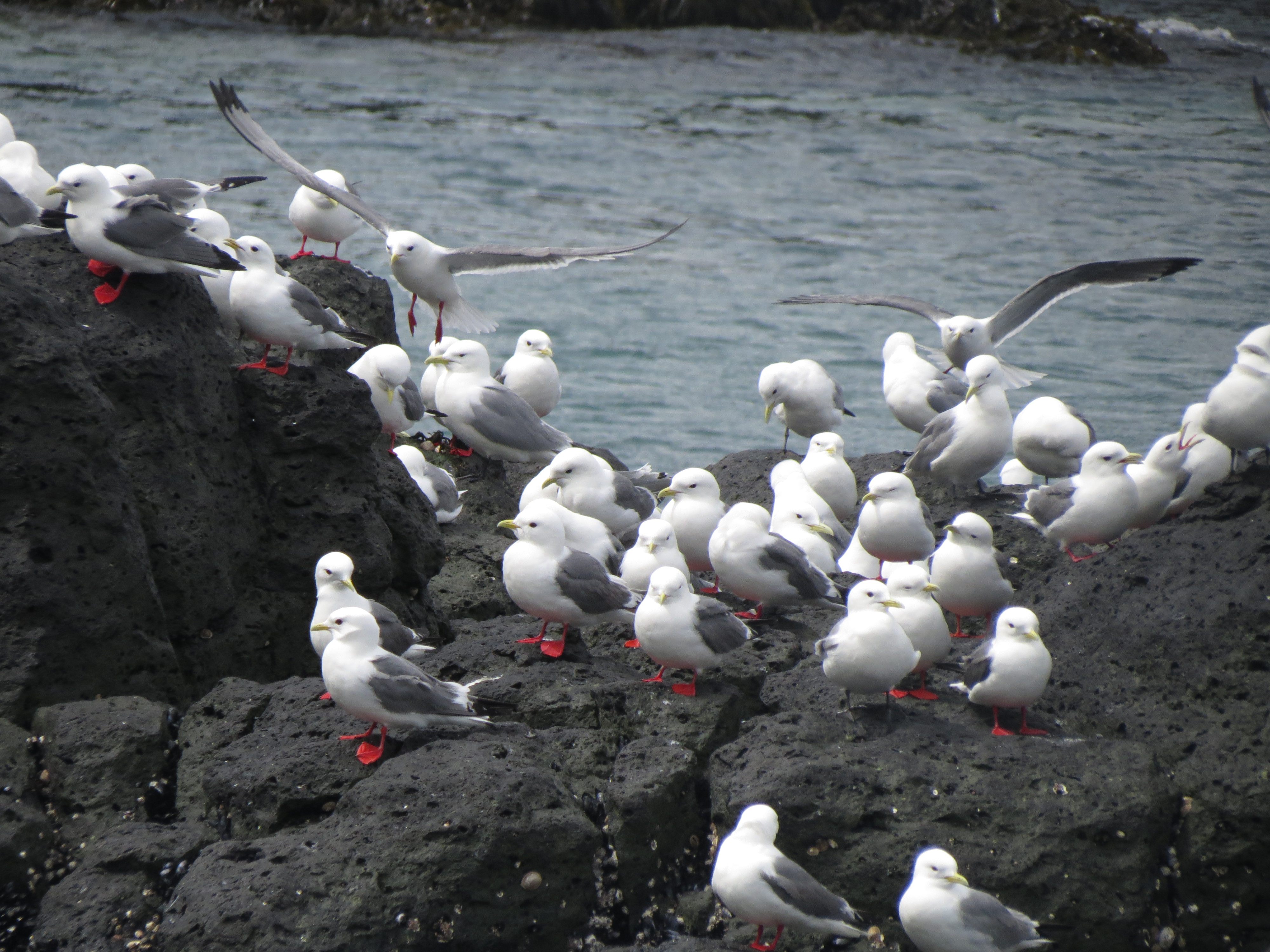Scientists are working all over the world, exploring questions on every subject imaginable. A critical part of being a scientist is sharing your findings in a scientific journal (very similar to a magazine) that other scientists then read, learn from, and build their ideas for future work.Scientific journals are usually focused on a certain topic, such as ‘Animal Behavior’ or ‘Journal of Nutrition’. Organizing science into topics such as these help other scientists find the results they are interested in.
Some journals take this organization a step-further, and sometimes publish a group of papers in the same issue that focus on an even more specialized theme. These studies are usually planned separately, but publishing them together provides a much greater understanding of the topic than if they were published in separate years or journals.
MEPS (standing for Marine Ecology Progress Series) is a journal that publishes studies about marine biology.
MEPS has just published a group of papers that all examine how seabirds are responding to oceanographic changes (such as water temperature and sea-ice) in the Bering Sea.
The authors of these papers have studied seabirds both at their breeding colonies and out at sea, and all these scientists have examined patterns of seabird behavior over a long time-period. One paper led by Dr. Alexis Will, University of Alaska Fairbanks (UAF), includes information about red-legged kittiwakes collected over 103 years!
Together, these papers provide an incredible insight into how warmer conditions in the Bering Sea are affecting seabirds. These papers show that seabird distributions have changed over time, with some species (such as the common murre and black-legged kittiwake) appearing to have more flexibility about where they go to find their food than other species (such as the red-legged kittiwake). Long-term records also revealed that warmer ocean conditions might be bad for some species of seabirds (such as plankton-eating least auklets breeding on the Pribilofs) but not for others (such as fish-eating thick-billed murres and black-legged kittiwakes breeding on the Pribilofs).
Here’s a quick summary of the key results from each paper in this theme, provided by Dr. Rachael Orben (Oregon State University) and Dr. Sasha Kitaysky (UAF):
(1) Timing of sea-ice retreat affects the distribution of seabirds and their prey in the southeastern Bering Sea
- –This paper looked at the at-sea distribution of seabirds over a 40-year period, including years with both early and later sea-ice retreat.
- –They found that sea-ice extent influences where birds spend their time at-sea.
- –As the climate warms, the lack of sea-ice will therefore likely lead to changes in where seabirds forage.
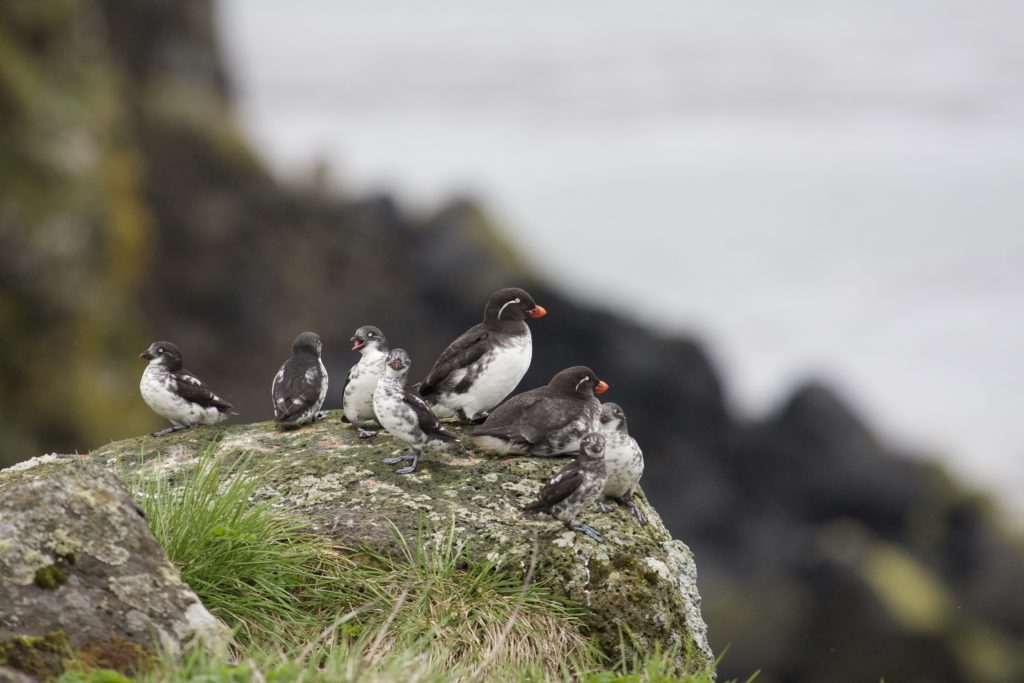
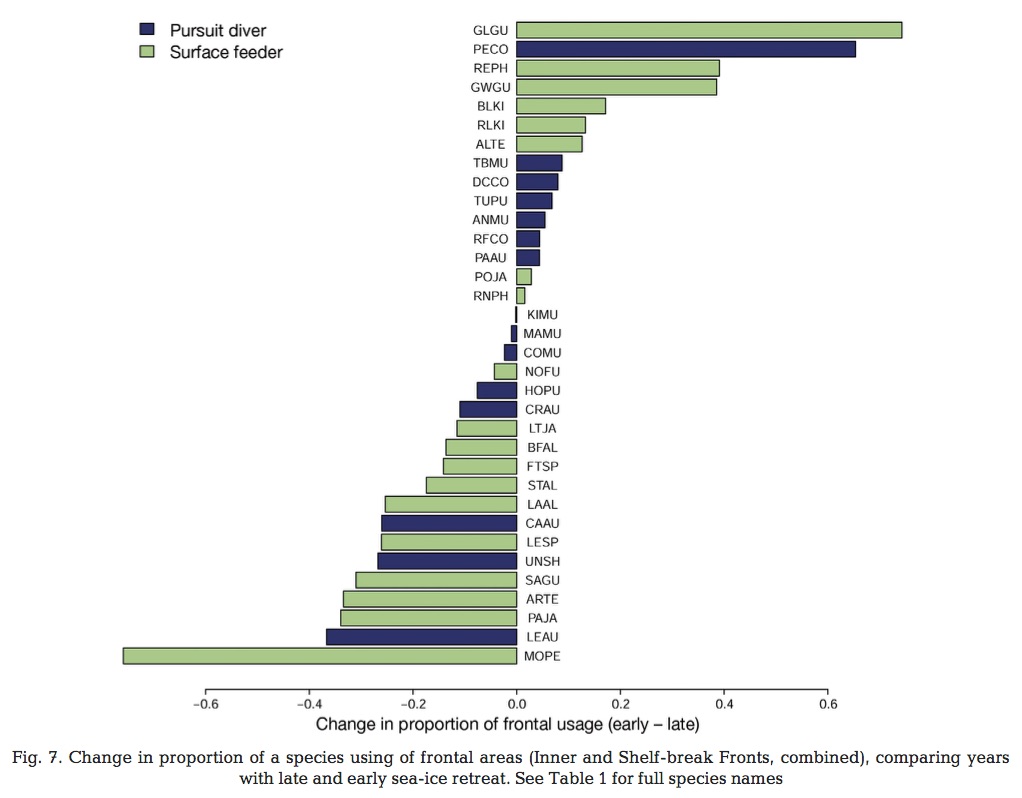
(2) Persistent annual migration patterns of a specialist seabird
- –Red-legged kittiwakes consistently spent their winter in the western Bering Sea and North Pacific.
- –During a four-year study, red-legged kittiwakes used the same areas for over-wintering despite varying environmental conditions. If food declines in these areas, such a conservative wintering strategy might make this species vulnerable.
- –It seems unlikely that red-legged kittiwakes spend much time among the sea ice, however they often use ecosystems where sea ice plays a role.
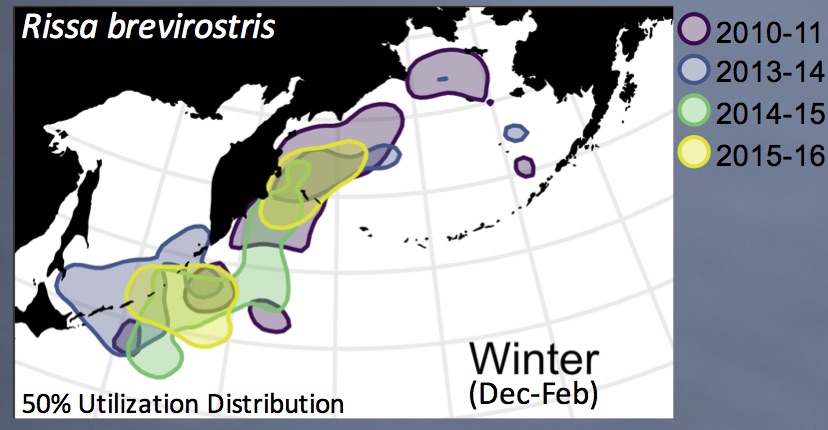
(3) Variability in trophic level and habitat use in response to environmental forcing: isotopic niche dynamics of breeding seabirds in the southeastern Bering Sea
- –Fish-eating seabirds fed mostly on the continental shelf (closer to their breeding colonies on the Pribilofs) when ocean conditions were warm, whereas they foraged on oceanic prey (farther from the Pribilofs) when ocean temperatures were colder.
- –When food was in short supply, fish-eating seabird species fed on different prey and/or in different locations. When food was plentiful, seabird species fed on similar prey.
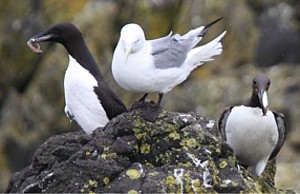
(4) Inter-annual climate variability affects foraging behavior and nutritional state of thick-billed murres breeding in the southeastern Bering Sea
- –Murres fed their chicks squid and benthic fish (fish that live near the bottom of the ocean) in years with colder ocean temperatures, and juvenile pollock in warmer years.
- –Murres had easier access to food and experienced less nutritional stress under warm ocean conditions.
- –Ocean temperatures did not affect the foraging trip durations of murre parents, and reproductive success was relatively constant across years.
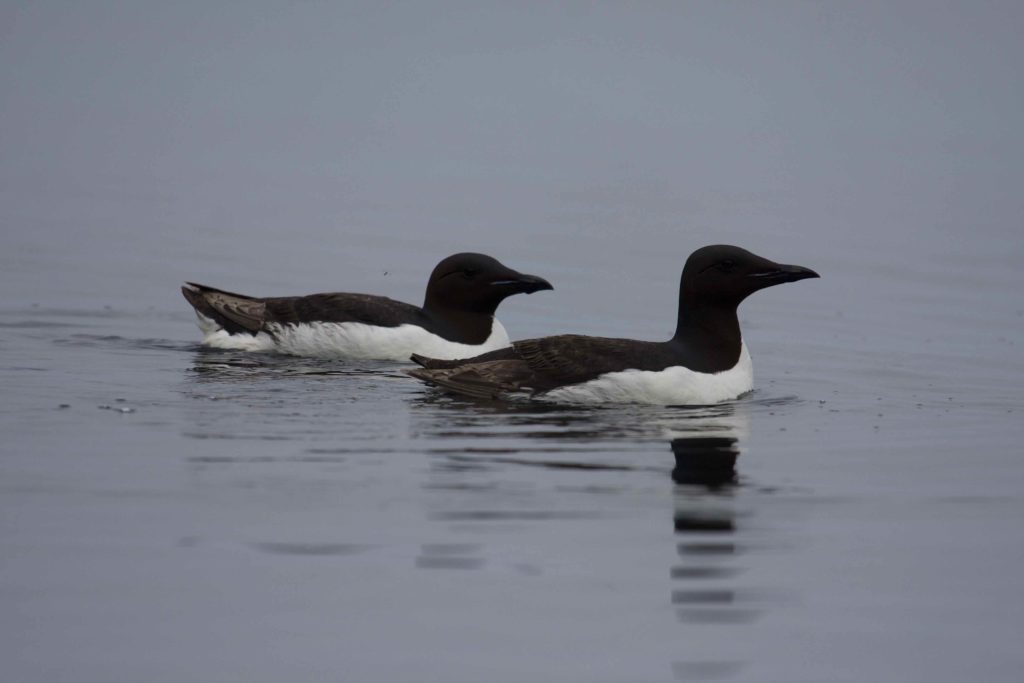
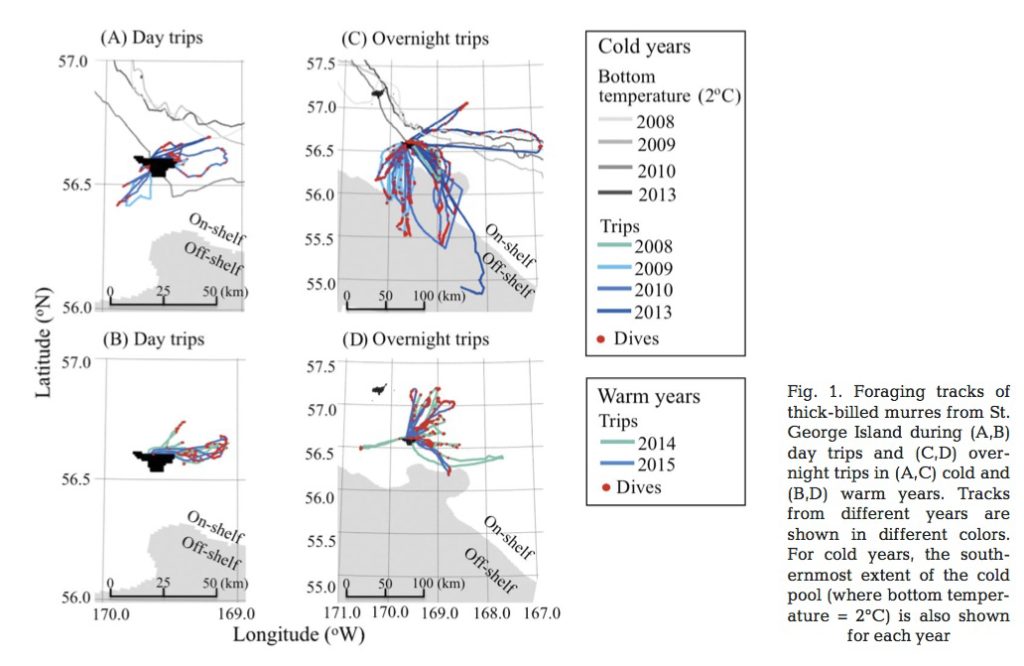
(5) Red-legged kittiwake feathers link food availability to environmental changes in the Bering Sea.
- –Red-legged kittiwakes have had a similar diet over the last 100 years.
- –Over time and under warm ocean conditions red-legged kittiwakes had easier access to food and experienced less nutritional stress
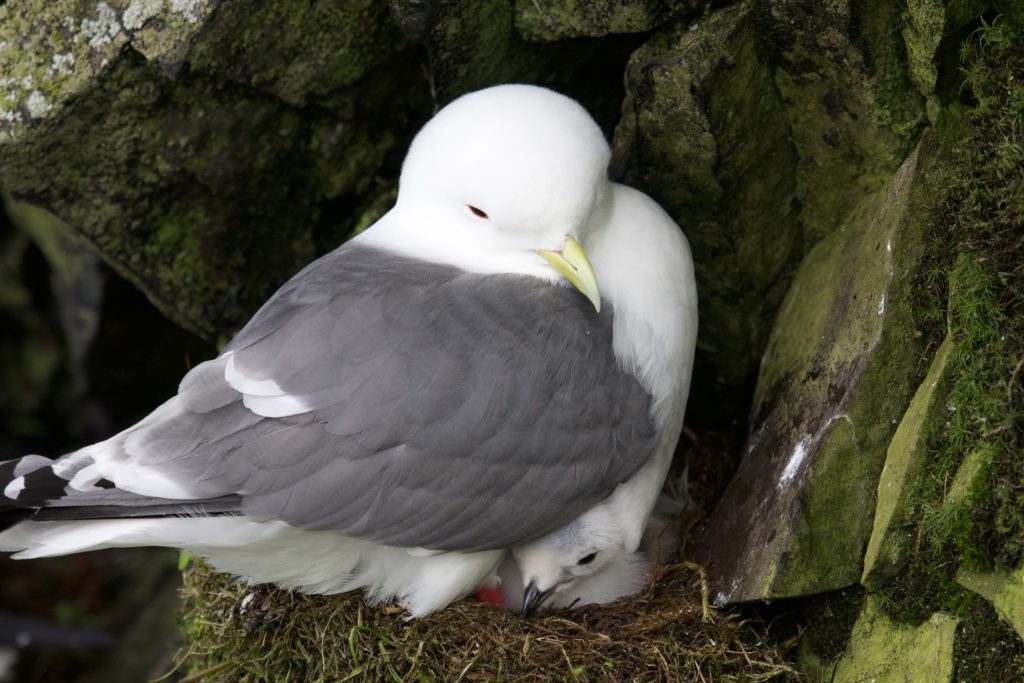
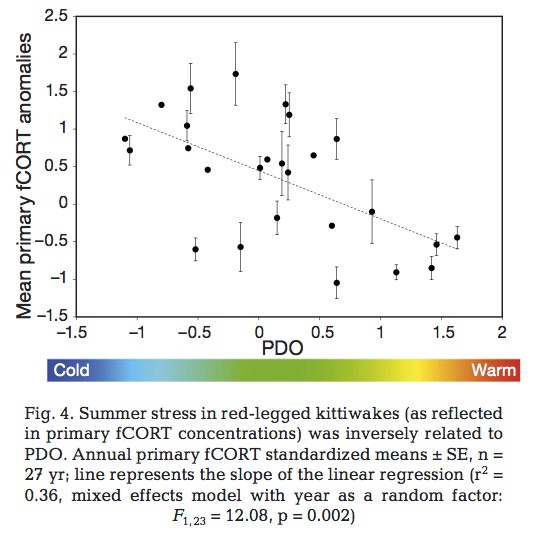
*************
References
Hunt, G.L., Jr., Renner, M., Kuletz, K.J., Salo, S., Eisner, L.B., Ressler, P.H., Ladd, C. & Santora, J.A. (2018) Timing of sea-ice retreat affects the distribution of seabirds and their prey in the southeastern Bering Sea. Marine Ecology Progress Series, 593, 209–230.
Kitaysky, A.S. & Hunt, G.L., Jr. (2018) Seabird responses to a changing Bering Sea. Marine Ecology Progress Series, 593, 189–194.
Kokubun, N., Takahashi, A., Paredes, R., Young, R.C., Sato, N.N., Yamamoto, T., Kikuchi, D.M., Kitaiskaia, E., Ito, M., Watanuki, Y., Will, A., Lauth, R., Romano, M.D. & Kitaysky, A.S. (2018) Inter-annual climate variability affects foraging behavior and nutritional state of thick-billed murres breeding in the southeastern Bering Sea. Marine Ecology Progress Series, 593, 195–208.
Orben, R.A., Kokubun, N., Fleishman, A.B., Will, A.P., Yamamoto, T., Shaffer, S.A., Paredes, R., Takahashi, A. & Kitaysky, A.S. (2018) Persistent annual migration patterns of a specialist seabird. 593, 231–245.
Will, A.P. & Kitaysky, A.S. (2018) Variability in trophic level and habitat use in response to environmental forcing: isotopic niche dynamics of breeding seabirds in the southeastern Bering Sea. Marine Ecology Progress Series, 593, 247–260.
Will, A.P., Kitaiskaia, E.V. & Kitaysky, A.S. (2018) Red-legged kittiwake feathers link food availability to environmental changes in the Bering Sea. Marine Ecology Progress Series, 593, 261–274.

